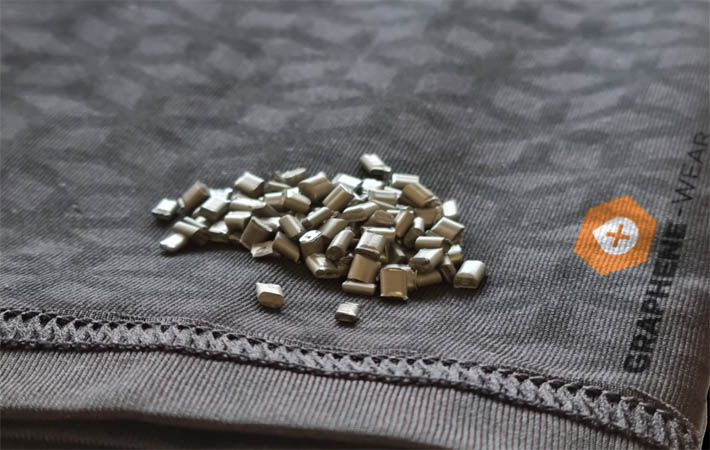University of Gloucestershire and Versarien, an advanced materials group, have joined hands to test the first graphene-enhanced sportswear. The university will carry out the first wearer trial for the clothing. Versarien plans to commercialise graphene in textiles through products that harness graphene’s unique thermal and moisture management properties.
A research team is carrying out tests to understand how a prototype upper body garment applied with Versarien’s graphene inks “Graphinks” through a screen-printing process – manufactured by their partner MAS Holdings – compares to a selection of other sports garments when worn during high-intensity exercise.University of Gloucestershire and Versarien, an advanced materials group, have joined hands to test the first graphene-enhanced sportswear. The university will carry out the first wearer trial for the clothing. Versarien plans to commercialise graphene in textiles through products that harness graphene's unique thermal and moisture management properties.#
Many fabrics have been introduced to the athletic apparel market amid manufacturers’ claims of improved evaporative characteristics and improved athletic performance.
Gloucestershire-based Versarien has been developing products that integrate graphene – the thinnest material yet discovered but also very strong – ranging from face masks to products that are currently under development for defence. The sportswear trials at the University of Gloucestershire are part of Versarien’s ongoing plan to commercialise graphene within the textiles industry through products that effectively harness graphene’s unique thermal and moisture management properties.
Athanassios Bissas, professor of Sport and Exercise Technologies at the University of Gloucestershire and project lead, said: “We’re delighted to be strengthening our links with Versarien in a study that is contributing to the development of innovative garments and that could potentially transform the sportswear industry.”
“This project provides an excellent opportunity for our department, its postgraduates and students to serve and interact with real-life science applications and advance their laboratory and analytical skills,” Bissas said. “We’re excited to be developing contemporary analysis techniques supported by AI, such as thermal imaging analysis, that can enable us to become an international player in the area of sportswear testing.”
The new study will measure the performance of the Versarien prototype in terms of heat and sweat retention and dissipation, compared with other tested garments, as a result of the interaction with the human body during strenuous exercise. For the study, the garments are worn by national-level runners, during running trials at the university’s international-standard sports arena and sports science laboratories on its Oxstalls campus.
The responses to the different garment conditions will be evaluated via blood, urine, skin/body temperature and cardiorespiratory measures alongside psychological measures to determine the wetness, thermal sensation and comfort perception of the participants. Sweat absorption and retention capacities of garments will be assessed using real-time thermographics.
Neill Ricketts, CEO of Versarien, said: “The properties of graphene have displayed early signs of making a significant difference to functionality of activewear. The rigorous set of tests that the University of Gloucestershire team has put together will reveal the full extent of the impact that Versarien’s Graphinks has on the performance of the garments and athletes.”
“Additionally, this is the next step in the journey to commercialise graphene, building upon our partnership with MAS Holdings to deliver tried and tested graphene-wear to innovative sportswear brands,” Ricketts said.
Mark Tabrett, senior lecturer in sport and exercise physiology and the project’s lead physiologist said: “It is a privilege as exercise physiologist and academic to design and implement advanced experimental conditions and techniques to answer real-life problems.”
“We are employing a large range of measurements along the whole clinical spectrum to understand the body’s respiratory and cardiovascular responses alongside hydration levels when exercising under different sportswear conditions.”
The findings will contribute to new knowledge in sports garment technology that aims to improve the physical and psychological state of people wearing the garments while exercising.
Dr. Sofie Kent, senior lecturer in Sport and Exercise Psychology, said: “Sport clothing can improve performance due to psychological factors. In particular, how freely the individual perceives they can move and the confidence that the garment may facilitate performance can impact upon speed and perception of effort.”
“Subsequently, by exploring and understanding an individual’s thoughts and feelings of clothing we can have a better understanding behind the mechanisms that may facilitate
Fibre2Fashion News Desk (SV)


